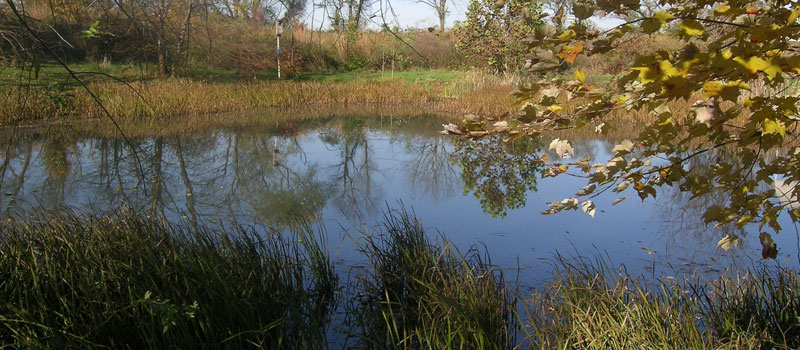There are a variety of types of wetlands, each with their own distinct ecosystem of vegetation and associated biodiversity.
How it Works
Wetlands are areas saturated by surface water or groundwater that support a prevalence of vegetation typically adapted for life in saturated soil conditions, including swamps, marshes, bogs, ponds, lakes, and hydric soils. Wetlands include all lands regulated as wetlands by the Pennsylvania Department of Environmental Protection and/or the U.S. Army Corps of Engineers. There are a variety of types of wetlands, each with their own distinct ecosystem of vegetation and associated biodiversity.
In addition to federal and state regulation, municipalities can take additional steps to protect wetlands from the impacts of development. All municipalities should consider developing wetland management standards. Land management and zoning tools such as "netting out" wetlands from lot .loarea and density calculations, regulating the disturbance of wetlands, and protecting wetland margins can be incorporated into local zoning and subdivision and land development ordinances.
Benefits
Promotes Biodiversity
Wetlands are distinct and rare ecosystems, which are home to a diverse number of aquatic plant and animal species. Preserving wetlands helps to protect important wildlife and aquatic habitats that are not often found in habitats outside of wetlands.
Increased Water Quality and Improved Stormwater Management
Protecting wetlands increases groundwater recharge and improves surface water management including reduction of flood magnitudes, erosion and sedimentation. Preserving wetlands also promotes biofiltration, which assists with removal of pollutants and sediment.
Energy Conservation
The protection of wetlands conserves energy by reducing pollutant loads, water degradation and flood damage that would otherwise require costly remediation.
Maximum disturbance limits, buffers, and the identification of activities permitted in buffers should be included in wetland protection standards.
Get Started
The protection of the natural environment, including wetlands, should serve as the primary basis for other land use policies and can result in the conservation of critical resources for future generations. Preserving, improving, and managing water quality are key components of protecting the natural environment.
Protection of wetlands through methods such as regulatory controls, open space and greenway preservation and management, and stormwater best management practices can conserve resources, protect natural functions, and improve quality of life. Provisions for wetland protection are typically included in the municipal zoning ordinance as well as the subdivision and land development ordinance. The steps to consider when implementing wetland protection include:
Establish Policy
Environmental protection policy should be established within municipal policy plans and should be consistent with the intent and provisions of all federal and state programs, rules and regulations pertaining to wetlands. Wetland protection policies should generally form an integrated natural resources protection strategy or more specifically a water resources protection strategy. Policy recommendations for the protection of wetlands, including guidance on how they will be protected through the application of ordinance standards, should be developed.
Resource Inventory
The policy plan should include an inventory that describes and maps known wetlands in the municipality, drawing from existing mapping such as the National Wetlands Inventory, Natural Heritage Inventory, and past land development plans. Soil types may be an indicator of areas with hydric soils, or those likely to be classified as wetlands, which may serve as a good starting point for municipal review. Ideally, wetlands within a municipality should be inventoried and mapped as an individual map and/or coverage in the municipal Geographic Information System (GIS) to provide a general idea of the location of wetlands. This mapping will be incomplete, as site specific analysis is necessary to identify wetlands, and standards will need to consider and address this shortfall.
Develop and Adopt Ordinance Standards
After a policy basis is established, a municipality should amend its zoning ordinance to include wetland protection standards or maximum disturbance limits, wetland buffers, and activities permitted in these buffers. The subdivision and land development ordinance should require site specific identification of wetlands to be conducted as part of the land development process, as existing mapping of wetlands is incomplete. Strategies may include provisions being added to the preliminary and final plan requirements of the subdivision and land development ordinance to require such studies.
In addition to regulating maximum disturbance of wetlands, municipalities should include a wetland margin buffer that limits disturbance to 20% within 50 feet of the wetlands' edge, and specific standards should be developed to regulate water flow into wetlands on a development site to ensure the wetlands retain necessary water supplies.
Zoning Considerations: Zoning ordinances can protect wetlands in a number of ways. Beyond the natural resource protection standards listed above, municipalities can implement zoning to set development patterns that further encourages natural resource protection. For example, cluster zoning, or Transfer of Development Rights (TDR) are suggested methods of protecting wetlands by directing growth toward land most suitable to be developed while preserving areas of land containing high value natural resources.
Review Established Standards
For municipalities with existing wetland protection standards, a full review of the ordinance should be undertaken to determine the best approach for updating or expanding the resource protection standards to address current environmental best practices. Depending on the strength of the current standards, amendments to fill in the gaps and add more specific protection criteria may be all that is required. Otherwise, a full update and reorganization of the protection standards may be needed.
Ordinance Organization
A well-organized ordinance makes it easier to enforce the provisions, avoid inconsistencies, and provide a clearer understanding of resource protection requirements for municipal officials, landowners, and developers. The most efficient means of organizing natural resource standards in municipal regulations is to include an umbrella approach to natural resources addressing wetlands as well as steep slopes, woodlands, and riparian buffers in a single article of the ordinance. The wetland protection standards should be placed in one location in the ordinance, rather than several different sections.
Considerations
Define specific standards
For natural resource regulations to be effective, specific regulations and land development policies need to be defined. Language should be definitive in establishing maximum disturbance limits for wetlands, as well as required buffering and activities permitted within those buffers.
Mitigation vs. preservation
Mitigation or replacement of wetlands may be permitted at the federal or state level (with proper permits); however, protecting the natural wetland is generally preferable. Municipalities allowing mitigation for disturbance of wetlands rather than their preservation may find that measuring mitigation at the municipal level is a very complex task to administer, and may not reflect the environmental policy goals of the municipality.
Federal, state, and local protections
Municipalities may be hesitant to regulate wetland disturbance and the local level since federal and state protection applies to municipal wetlands. There are differences between the state and federal regulations however, and those regulations and their interpretation may shift over time. Municipal level regulation will ensure a thorough understanding of the resources present on the site and provide a local say regarding impacts to those resources.
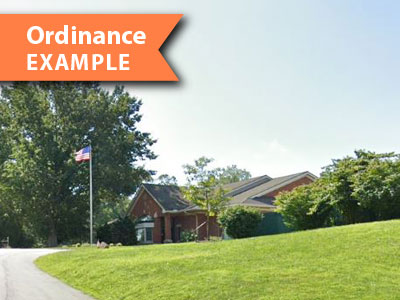
East Bradford Township natural features protection standards regulate wetlands through its extensive Riparian Buffers standards.
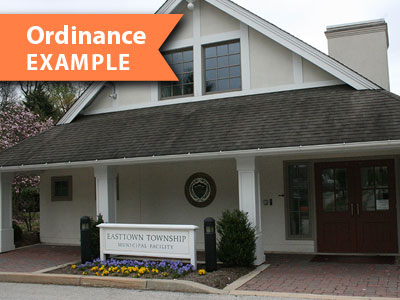
Easttown Township's natural resource protection ordinance contains criteria to delineate wetlands, prohibits disturbance without state or federal permits, and establishes a 50-foot wetland buffer.
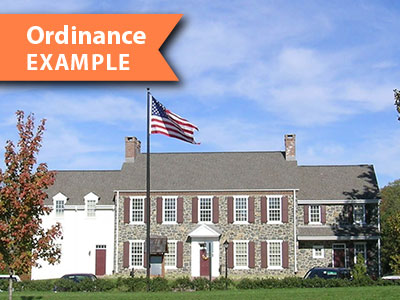
Kennett Township has a number of rigorous environmental regulations, including those concerning wetlands.
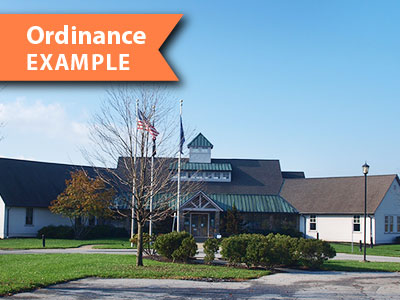
New Garden Township's zoning ordinance contains a number of wetland protections, including requirement of a state or federal permit for disturbance, maximum disturbance limits, and establishes a 75-foot wetland buffer.

Model Resource Protection Ordinance
The Chester County Planning Commission partnered with the Brandywine Conservancy in 2015 to develop a set of natural resource protection standards to support the Conservancy's Brandywine Creek Greenway initiative. The Natural Resource Protection standards provide a template and background information for addressing natural resource protection through municipal ordinances. The model standards are located in The Brandywine Creek Greenway Strategic Action Plan Part 3 — Toolkit starting on page 327. Specific wetlands standards are located in the same document starting on page 347.


